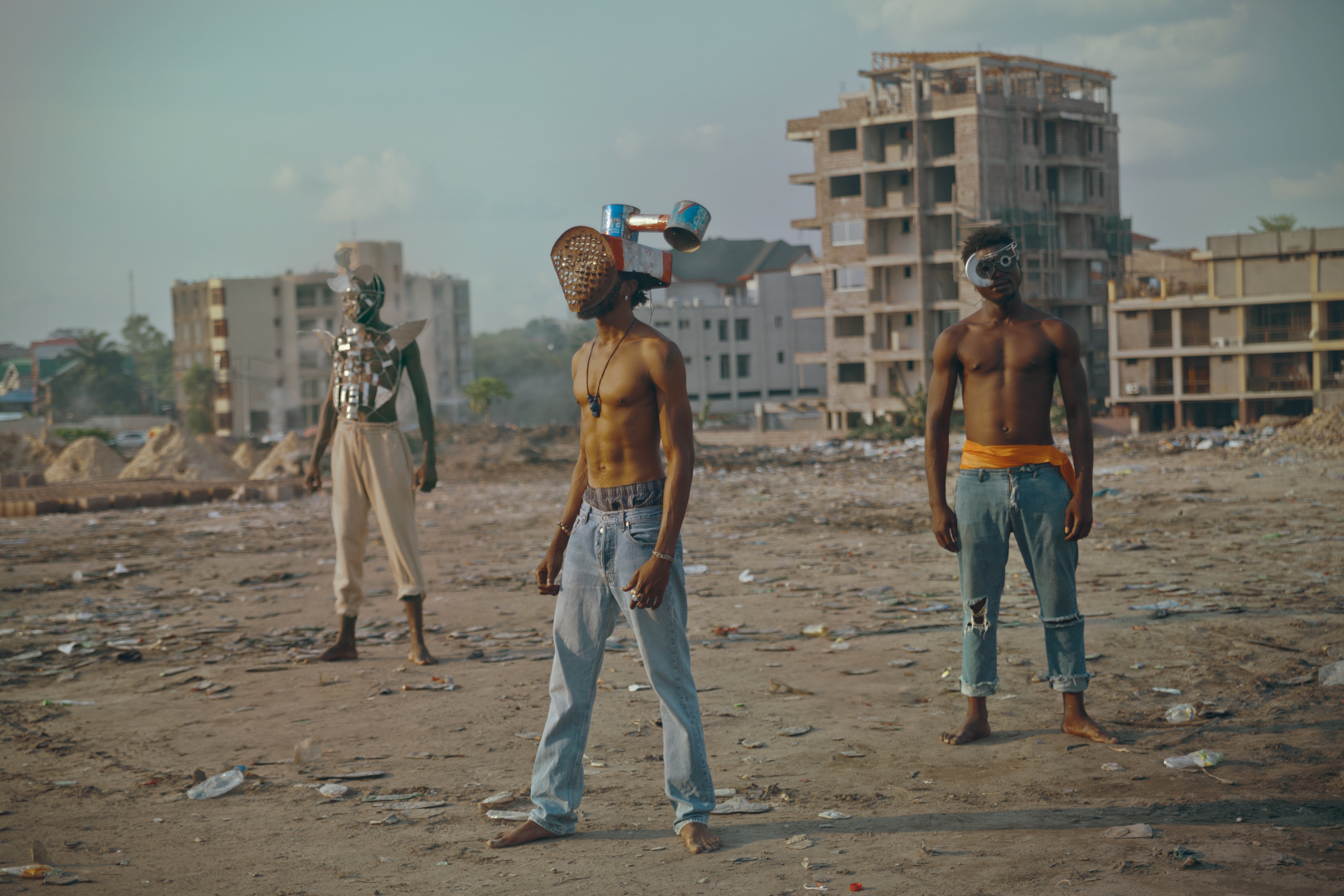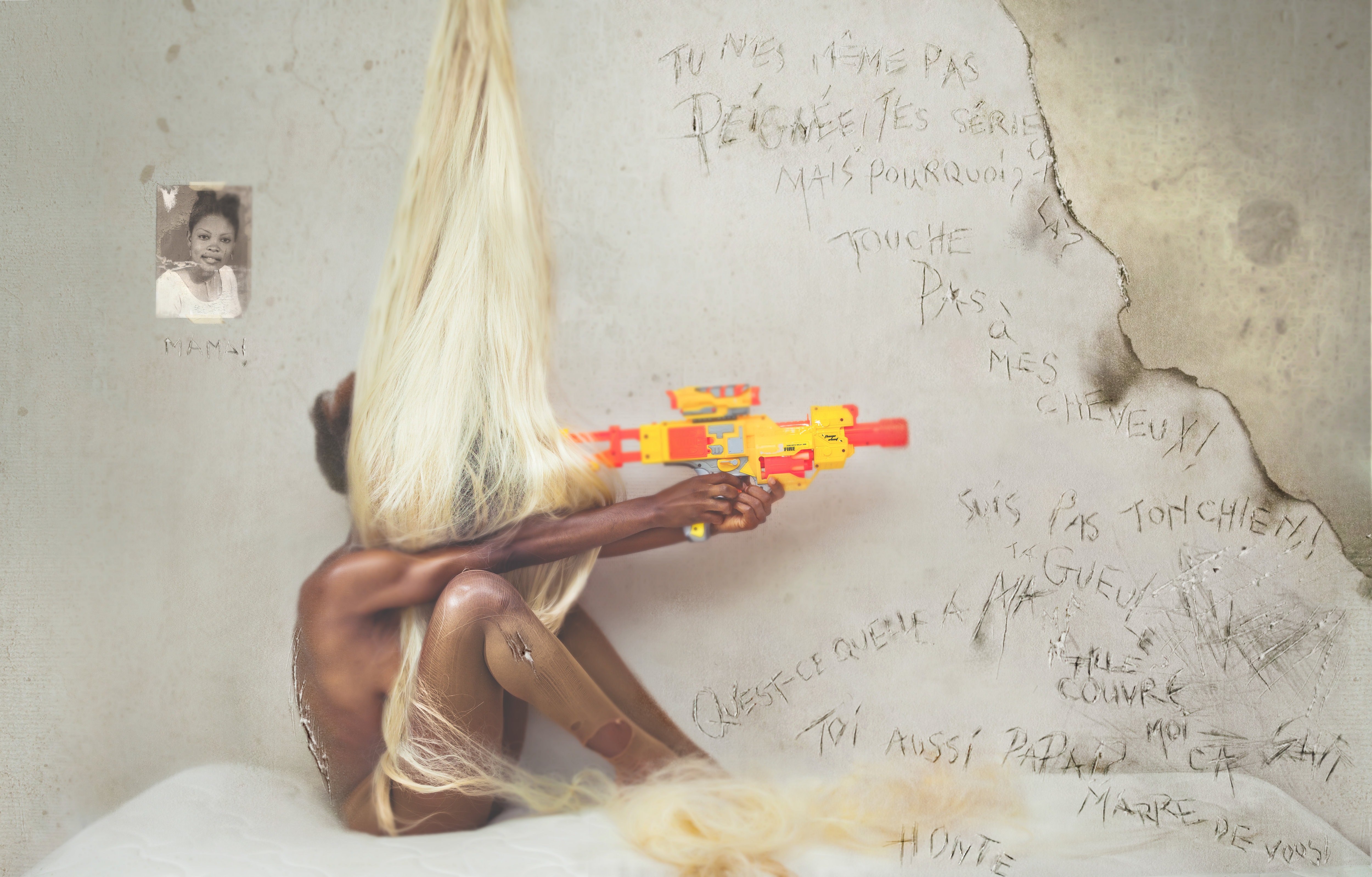Inquire
137 Reserve Club
Make an offer
Prisca Munkeni Monnier
La Vie est Belle
Prisca Munkeni Monnier

Prisca Munkeni Monnier. Zombie, 2020
Kinshasa, Ex. Zaïre, 1987. The movie La Vie est Belle had just been released. It was the first time in history seeing a Congolese story told by Congolese artists. I was six years old at the time; a daughter of the post-colonialism generation. Even at such a young age, I knew it meant something. The hero of the movie, is a young musician, starring Papa Wemba at the debut of his career who advocates for artists, for the forsaken – as he had once been himself.
In the three decades since the release of La Vie est Belle, the Democratic Republic of Congo has been subjected to endless wars as international mining firms have continuously stolen mineral wealth. Their activities have ravaged the land, which has become seemingly doomed to a sad and devastating fate. But throughout the years and with a transcendent strength, the Congolese people have persisted. They are still standing, against all odds.
“La Vie est Belle is a photographic tale, a visual manifesto inspired from the very same movie that marked my childhood. It is an homage to the popular idiom ‘Article 15,’ or in other words, ‘work with what you have.’ This mantra became the symbol of the eternal Congolese creativity and the ability to go beyond adversity.
La Vie est Belle is more than a Congolese mythology; it is also a human story. It is the story of us, the children of Congo, raising our fists. It is a gesture of revolution to reclaim our land with one weapon: Art.
Selected Works
Prisca Munkeni Monnier
« Nzinzi », La Mouche, 2020
1.5 ETH
Prisca Munkeni Monnier
Article 15 Chapitre II " NETI NETI TE ", 2020
1.5 ETH
Prisca Munkeni Monnier
Article 15 Chapitre III, « Cheguevara », 2020
1.5 ETH
Prisca Munkeni Monnier
Laboratoire, 2020
1.5 ETH
Prisca Munkeni Monnier
Miami, 2020
1.5 ETH
Prisca Munkeni Monnier
Visa Dont Care, 2020
1.5 ETH
Full Collection
Artist
Prisca Munkeni Monnier
1981 (Belgium)
-
Website_
-
Twitter_
-
Instagram_

Prisca Munkeni Monnier is a Zairean artist based in Marseille and Kinshasa. She grew up in Kinshasa in 1984, becoming Congolese throughout history in 1997 and Studied in South Africa.
“The country that saw me born is not mine, the state that saw me grow up has disappeared, the nation of my passport barely exists. Remain my culture, in memory weakened by the jolts of history, and whose survival is based only on a handful of people, an oral tradition whose breath is dwindling. Without doubt is this the breeding ground of my art, this propensity to want to make dialogue frozen moments, prolong their existence to infinity, force them to speak in an environment saturated with elements, lights. Over time, objects, places or characters through which our identity is forged, dissipate, memories with diaphanous forms. The weight of their senses, frustrations or pride engendered slowly bury themselves in our daily lives, at the gates of oblivion. And memory, stuck in this daily loses the thread: why we cry, why we love, why we live.”
— Prisca Munkeni Monnier







